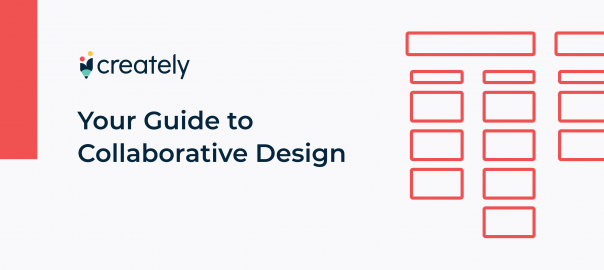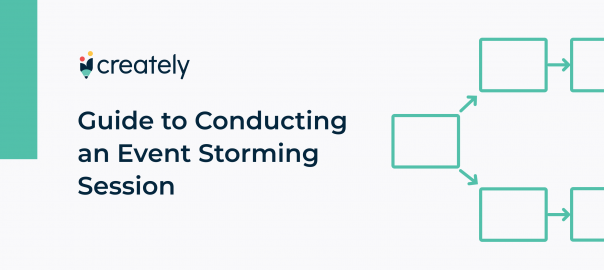
A design sprint is a focused, time-bound process that helps teams solve problems, test ideas, and make decisions quickly. But running one successfully isn’t just about following the steps—how you conduct it matters. Strong facilitation, active engagement, and clear execution are what turn a sprint from a plan on paper into real results. In today’s world of remote and hybrid teams, AI-assisted tools, and visual-first collaboration, knowing how to do a design sprint effectively is more important than ever.
The Design Sprint Team
A design sprint works best with a small, focused, and cross-functional team—usually 5 to 7 people. Each member plays a key role in keeping momentum and ensuring decisions are made quickly.
- Decider – The final decision-maker who aligns the team and makes tough calls when needed.
- Facilitator – Guides the process, keeps activities on time, and maintains team focus.
- Designer – Visualizes ideas, creates prototypes, and ensures user experience quality.
- Researcher or Analyst – Brings user insights and data to ground decisions in evidence.
- Marketer or Strategist – Ensures solutions align with the brand and business goals.
- Developer or Technical Expert – Evaluates technical feasibility and constraints early.
For larger sprints, you can add roles like note-takers or observers, but keep the core team small enough for fast collaboration and clear ownership.
Steps to Run a Design Sprint
Step 1: Sprint Prepping for Success (Before Day 1)
The key to running a design sprint successfully starts before the first day. Preparation ensures your team is aligned, focused, and ready to move fast.
Define the sprint challenge
Start with a single, actionable question—your “north star” for the sprint. Framing it as a “How Might We” question ensures everyone understands the goal and focus of the week.

Assemble the right team
Keep the group small, ideally 5–7 people. Include a decider, facilitator, designer, and researcher to balance perspectives. A diverse team encourages creative solutions and faster decision-making.
Plan logistics
Whether your team is in-person, remote, or hybrid, make sure all tools and spaces are ready. Align time zones, test your software, and set up your workspace so that nothing interrupts the flow of the sprint.
Gather research and inspiration
Bring together user insights, analytics, competitive reviews, and any relevant background. Short “lightning talks” can give context and spark ideas before ideation begins.
Set expectations and rules
Clarify how the team will work together: participation norms, energy levels, and decision authority. Establishing ground rules upfront helps prevent misunderstandings and keeps the sprint moving efficiently.
Creately tip
Use Creately’s AI design sprint template to organize goals, research, and the agenda in one shared workspace. This keeps everyone on the same page and makes collaboration seamless.
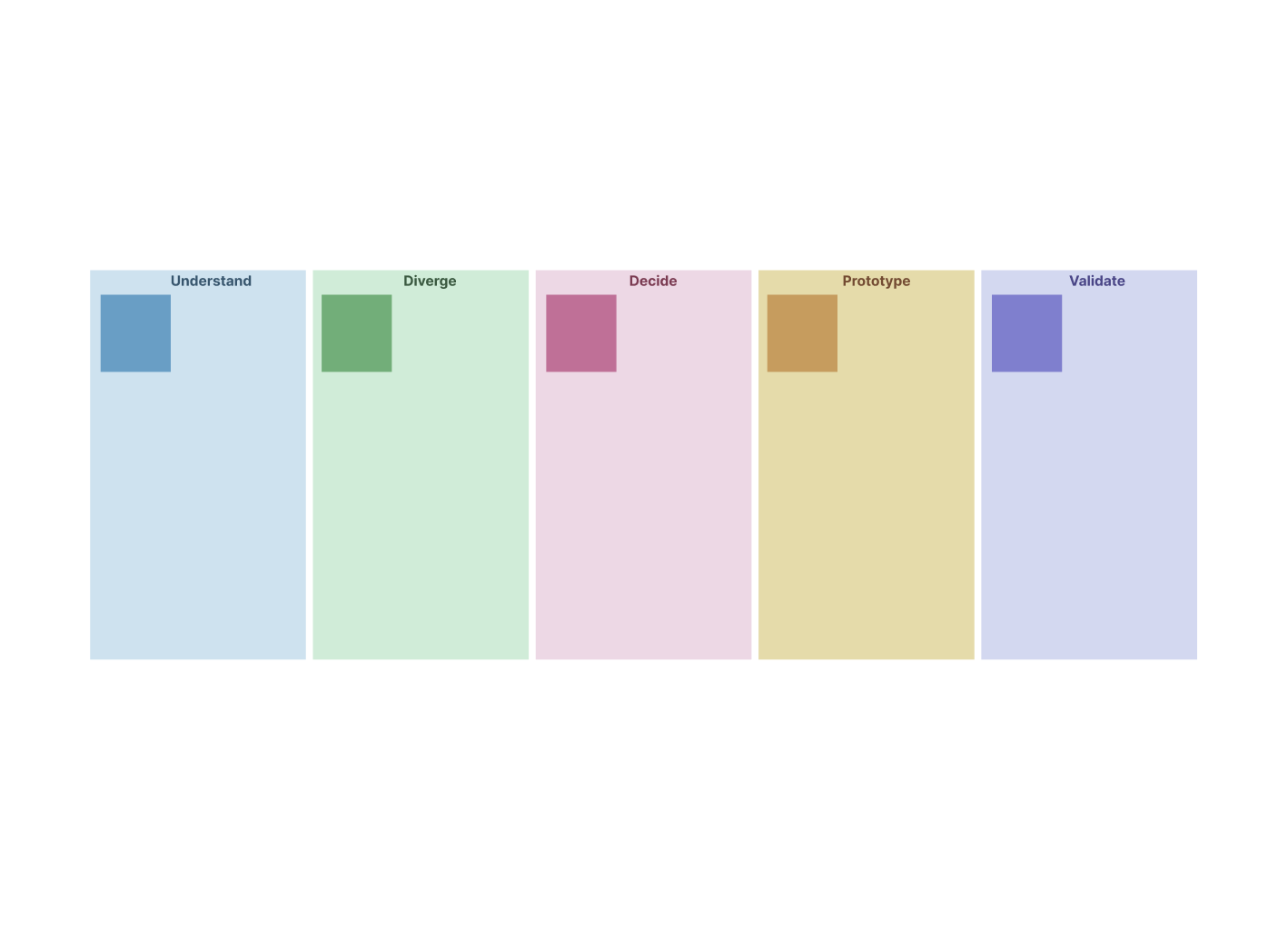
AI Design Sprint Template (Click on the template to edit it online)
Step 2. Facilitating the Sprint
Running a sprint successfully isn’t just about following the steps—it’s about how you guide the team through them. Good facilitation keeps energy high, decisions clear, and collaboration productive.
Opening the sprint
Start by setting the tone, recapping the goals, and introducing participants. A visual overview of the plan helps everyone understand the flow and what to expect.
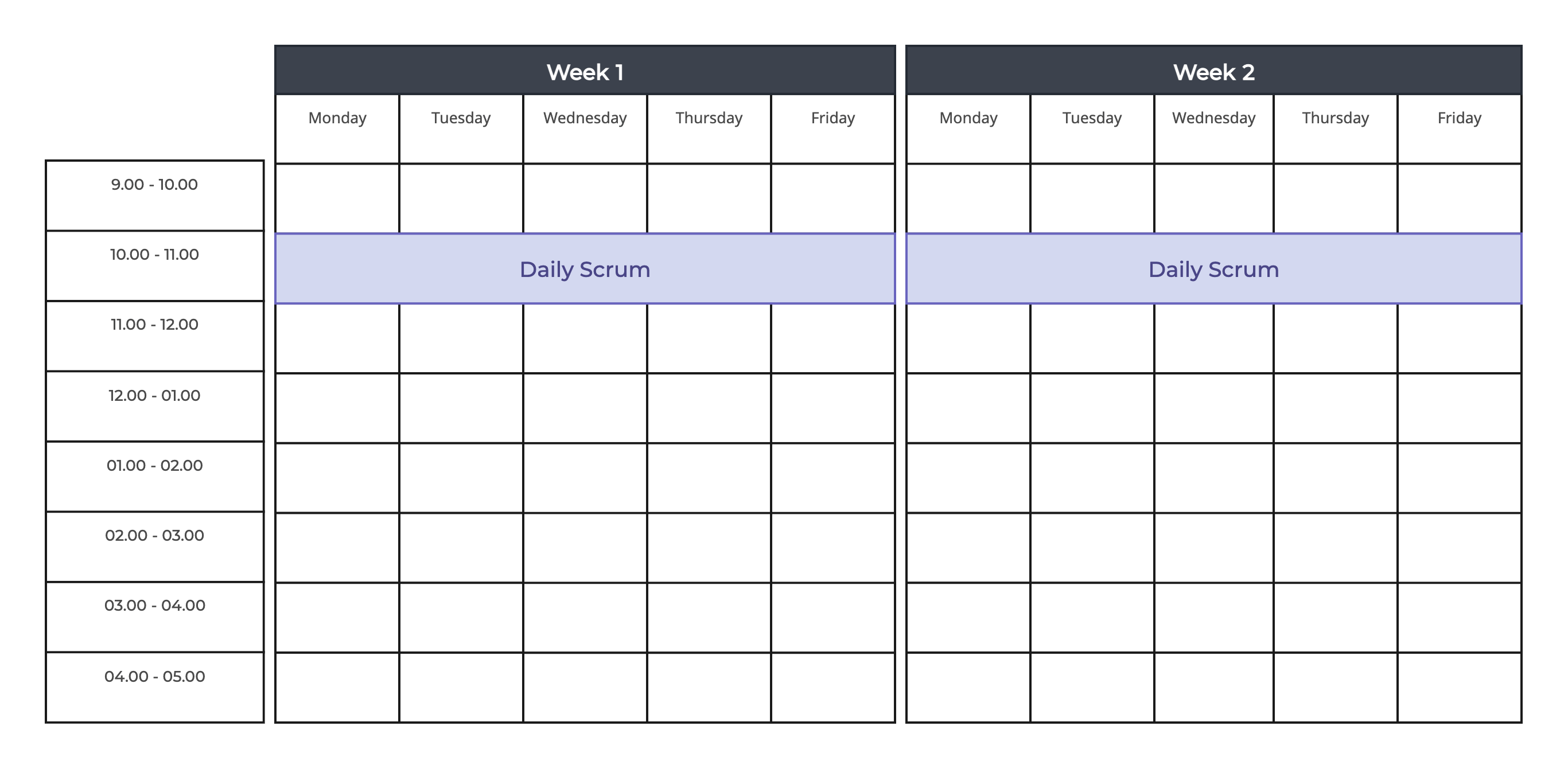
Sprint Schedule (Click on the template to edit it online)
Timeboxing and pacing
Maintain momentum by allocating clear time limits for each activity. Smooth transitions between exercises keep the team focused and prevent bottlenecks.
Decision-making frameworks
Use tools like dot voting, heat maps, or an impact-effort matrix to help the team make quick, informed decisions without getting stuck in debates.
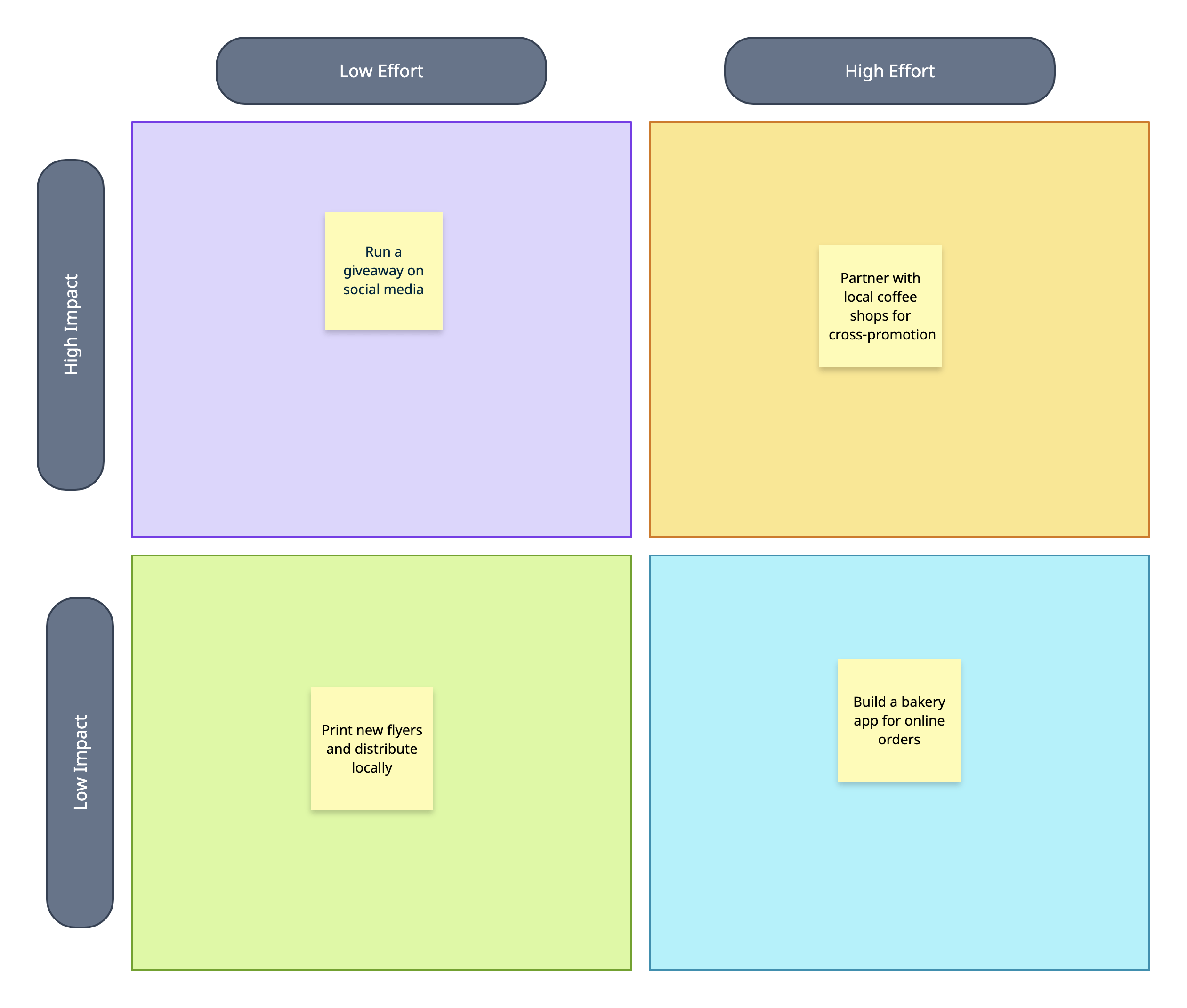
Impact Effort Matrix Example (Click on the template to edit it online)
Managing group dynamics
Encourage everyone to contribute, balance participation, and prevent dominant voices from taking over. Fostering creativity requires active attention to group energy and interaction.
Micro-jobs and delegation
Assign small roles, such as timekeeper or board manager, so the facilitator can focus on guiding the overall flow rather than tracking every detail.
Engagement techniques
Keep the team involved with prompts, “silent brainstorming,” call-outs, and quick check-ins. These techniques are especially important for remote or hybrid participants.
Documenting visually
Capture ideas, cluster insights, and track decisions using Creately. Keeping everything visible ensures transparency and makes follow-up easier after the sprint.
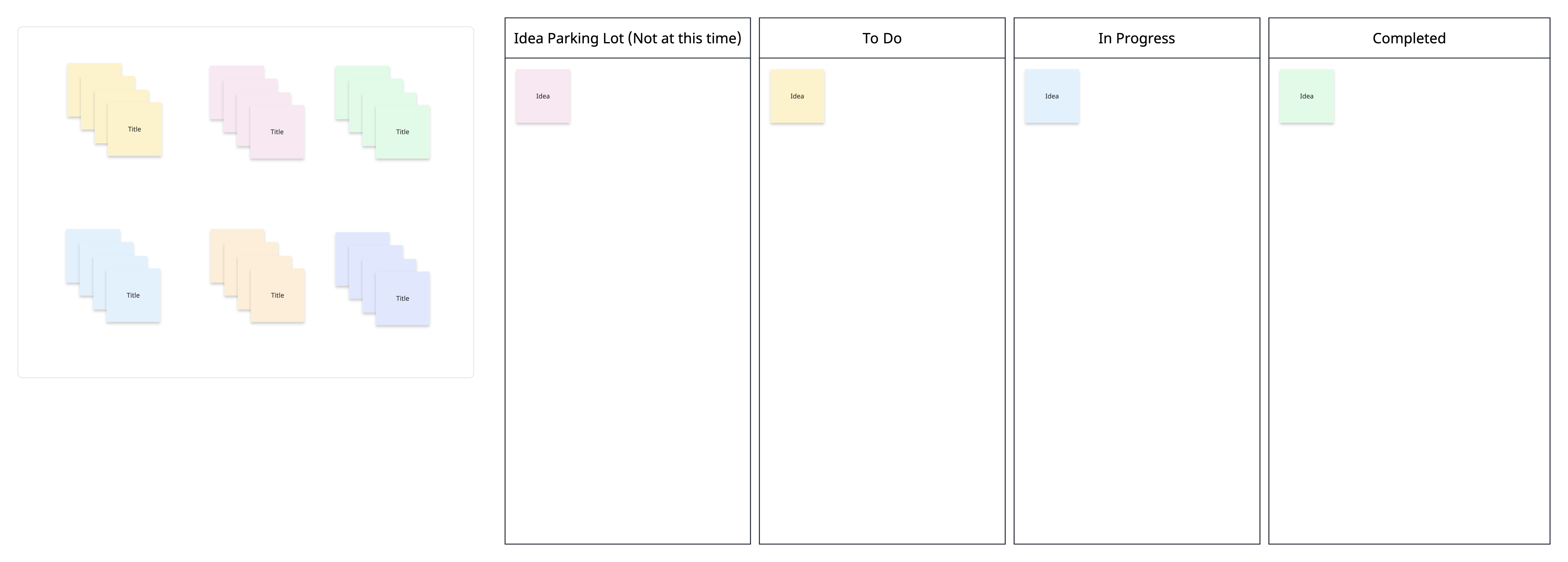
Idea Board (Click on the template to edit it online)
Step 3. Making Sense of Design Sprint Outcomes
The sprint doesn’t end when the last session wraps up—what you do with the results determines its real impact.
Debrief and retrospective
Take time to review what worked, what didn’t, and capture key learnings for the team by running a retrospective. Reflecting as a group helps identify improvements for future sprints.
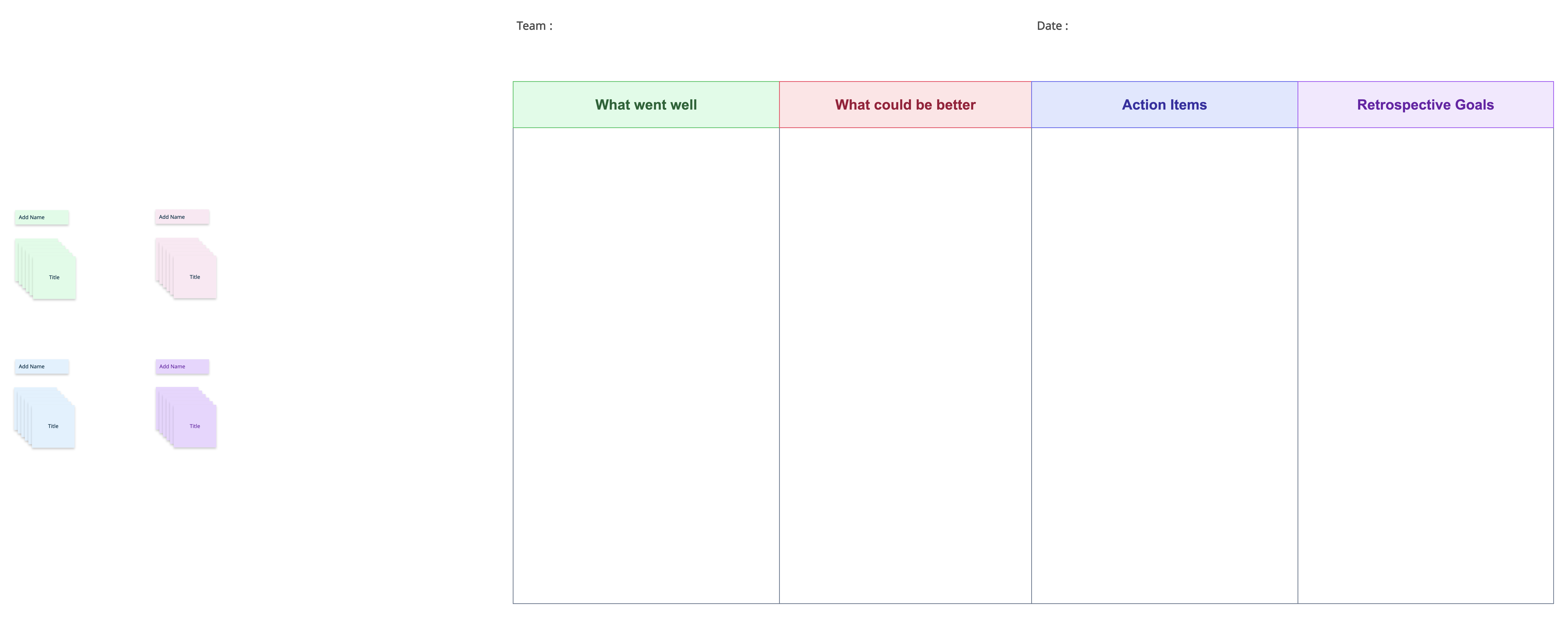
Sprint Retrospective Template (Click on the template to edit it online)
Synthesizing insights
Cluster ideas, map themes, and connect outcomes to relevant metrics. This makes patterns clear and ensures insights are actionable rather than just notes on a board.
Translating outputs into action
Turn the findings into MVPs, experiments, backlog items, or roadmap priorities. This step ensures the sprint leads to tangible progress and meaningful results.
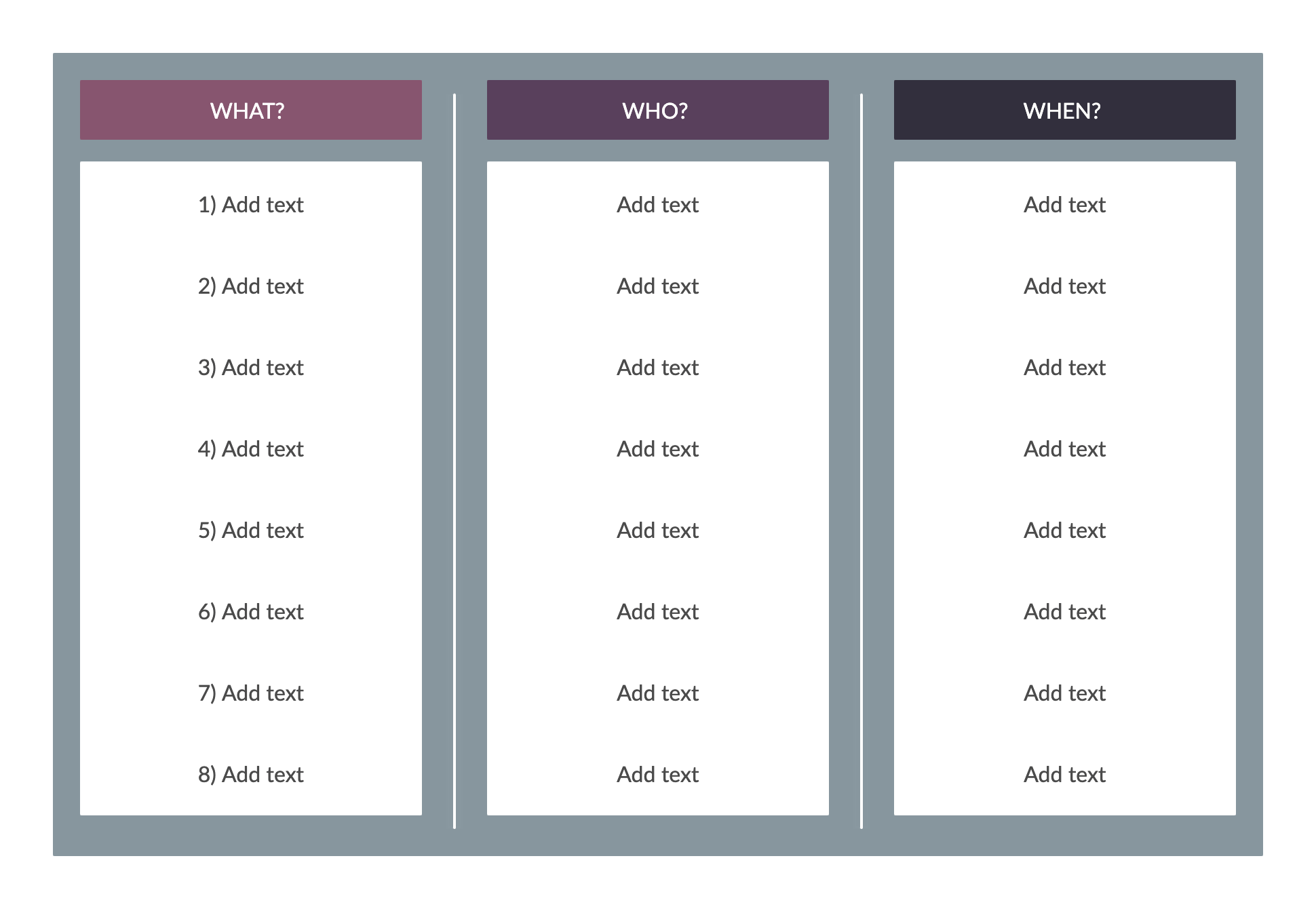
Action Plan for Retrospective (Click on the template to edit it online)
Creating shareable artifacts
Use customer journey maps, decision diagrams, or presentations to communicate results effectively to stakeholders. Clear documentation helps everyone understand the decisions made and next steps.
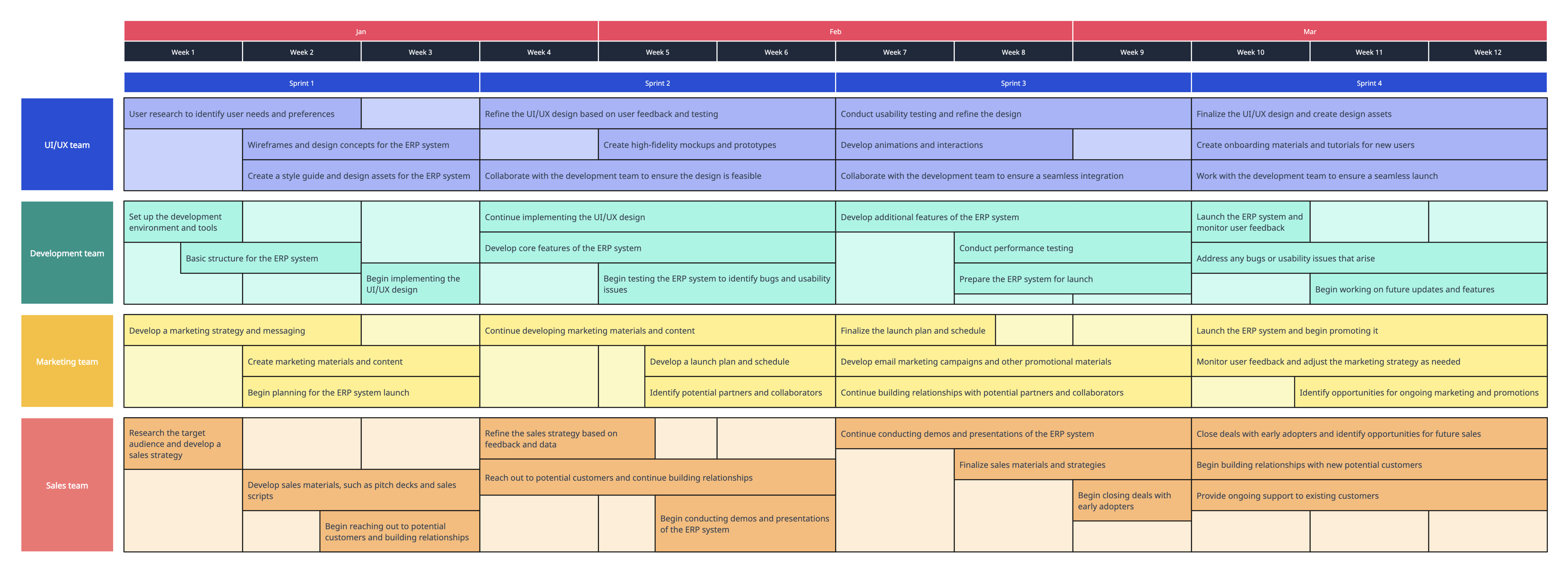
Agile Roadmap Template (Click on the template to edit it online)
Creately tip
Use Creately’s real-time collaboration, templates, visual clustering, commenting, and presentation mode features to organize all sprint outputs. This keeps ideas clear, decisions tracked, and makes it easy to share insights with the team.
Step 4. Customizing and Scaling Design Sprints
Not every design sprint needs to follow the traditional five-day format design sprint steps. Adjusting the structure and scope helps your team stay productive and meet project constraints.

5-Day Design Sprint (Click on the template to edit it online)
Compressed or mini sprints
Shorter versions, like 2-day, half-day, or sprint-by-feature sessions, let teams focus on specific problems quickly without losing momentum.
Non-product sprints
The sprint framework can be applied beyond product development—to service design, team process improvements, strategy challenges, or internal workflows.
Running multiple or parallel sprints
For large or complex projects, consider running sprints simultaneously or in stages. This approach lets different teams tackle separate areas efficiently while keeping alignment across the project.
Adapting to constraints
Tailor the sprint for small teams, limited tools, or low-bandwidth environments. Even with constraints, careful planning and the right facilitation ensure the sprint remains effective.
Running a Remote or Hybrid Design Sprint
Remote or hybrid sprints come with unique challenges, but with careful planning and the right tools, your team can stay aligned and productive. Below is a quick guide to common hurdles and how to address them:
| Challenge | How to Address It | Tool / Tip |
| Remote collaboration | Organize board layouts, shared screens, and task flows for synchronous and asynchronous work | Use Creately to create a centralized virtual “war room” |
| Engagement & participation | Keep team members active and focused with signals and structured prompts | Hand-raising, visual cues, breakout sessions |
| Hybrid equity | Ensure both in-room and remote participants contribute equally | Rotate facilitation, track input on shared boards, maintain visibility |
| Idea capture | Prevent lost insights and maintain clarity | Use Creately to map ideas, track decisions, and collaborate in real time |
FAQs About How to Do a Design Sprint
How long is a design sprint?
A traditional design sprint lasts five days, but it can be adapted. Compressed or mini sprints—like 2-day, half-day, or sprint-by-feature sessions—are effective for smaller problems or teams.
What is a design sprint brief?
A design sprint brief is a clear, actionable document that defines the sprint challenge, objectives, team roles, and background research. It acts as the “north star” to keep the team aligned throughout the sprint.
Who should facilitate a design sprint?
A facilitator guides the team, manages time, ensures engagement, and keeps activities on track. They should be neutral, organized, and familiar with sprint methods.
What common mistakes should be avoided in a design sprint?
Avoid unclear goals, skipping research, low engagement, overcomplicating tools, and missing key roles like the decider or facilitator.
How can Creately enhance a design sprint?
Creately supports real-time collaboration, visual clustering, AI-assisted note synthesis, templates, commenting, and presentation mode, helping teams organize ideas, track decisions, and share insights efficiently.
How do you adapt sprints for large projects?
Run multiple or parallel sprints, or break a project into stages. Assign separate facilitators and track alignment across all streams.

